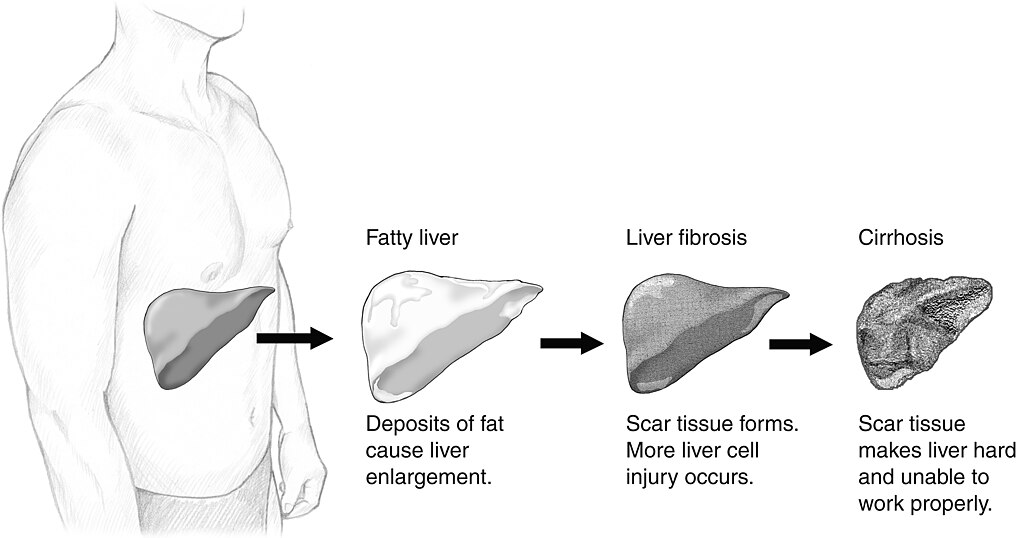Cause:
Non-Alcoholic Fatty Liver Disease (NAFLD) develops when excess fat accumulates in the liver cells of people who consume little or no alcohol. The exact cause of NAFLD is not fully understood, but risk factors include obesity, insulin resistance, high blood sugar, high levels of fats in the blood (hyperlipidemia), and metabolic syndrome.
Signs and Symptoms:
NAFLD often doesn't cause any symptoms in its early stages. As the disease progresses, symptoms may include fatigue, weakness, abdominal discomfort or pain, enlarged liver, and elevated liver enzymes detected through blood tests. In severe cases, NAFLD can lead to complications such as liver inflammation (non-alcoholic steatohepatitis or NASH), liver fibrosis, cirrhosis, and liver failure.
Diagnosis:
NAFLD is often diagnosed through imaging tests such as ultrasound, computed tomography (CT) scan, or magnetic resonance imaging (MRI), which can detect fat accumulation in the liver. Blood tests may also be conducted to assess liver function and check for elevated liver enzymes.
Treatment:
The treatment of NAFLD focuses on lifestyle changes to improve liver health and manage underlying conditions. These may include:
1. Weight Loss: Losing excess weight through a combination of diet and exercise can help reduce liver fat and improve liver function.
2. Healthy Diet: Adopting a balanced diet low in saturated fats, sugars, and processed foods, and high in fruits, vegetables, whole grains, and lean proteins can support liver health.
3. Regular Exercise: Engaging in regular physical activity can help reduce liver fat, improve insulin sensitivity, and lower the risk of complications associated with NAFLD.
4. Management of Comorbidities: Controlling conditions such as diabetes, high blood pressure, and high cholesterol can help prevent the progression of NAFLD.
5. Medications: In some cases, medications may be prescribed to manage underlying conditions or to target specific aspects of NAFLD, such as insulin resistance or high cholesterol.
Monitoring:
Regular monitoring of liver function and overall health is essential for individuals with NAFLD to assess disease progression and response to treatment. This may involve periodic liver function tests, imaging studies, and assessments of metabolic parameters.
Complications and Prognosis:
NAFLD can progress to more severe forms of liver disease, including non-alcoholic steatohepatitis (NASH), liver fibrosis, cirrhosis, and liver failure. However, the prognosis varies depending on factors such as the presence of other health conditions, lifestyle factors, and response to treatment. Early diagnosis, lifestyle modifications, and appropriate medical management can help prevent or delay the progression of NAFLD and reduce the risk of complications.

